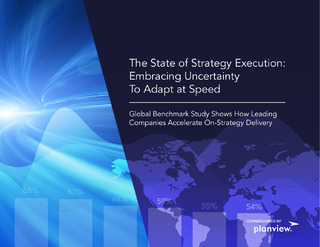Why is your organization unable to move faster? What’s holding it back? You may have made great strides recently in business. Yet, strategy execution is often hindered by legacy business constructs: Siloed departments and information; outdated, inflexible processes; and disparate tools and technology.
During times of upheaval, survival and the ability to pivot quickly is often due to a temporary suspension of these antiquated ways of operating. Executives do whatever they can to keep the organization viable and then it’s back to business as usual. The challenge is that disruptions are now the norm, not the exception.
Continuing to operate with these gaps makes it difficult to connect the dots between strategy and execution, especially in volatile, uncertain environments. The demands for change are only growing, especially as a result of the pandemic. According to a recent Gartner survey, 69 percent of boards of directors have fast-tracked digital business initiatives and nearly half expect to change the business models of the companies they counsel.
Executives and managers leading their businesses through these challenges can no longer afford to have blind spots, like limited information, inaccurate data, and no continuous line of sight from strategy to execution. Organizations that cannot adapt rapidly as a normal course of business will succumb to inevitable market shifts and swifter competitors.
To find out how some companies accelerate strategy execution and thrive as business fluctuations occur, while others barely “get by,” Planview commissioned a global benchmark study in December 2020. A survey instrument was designed to measure how fast and how well organizations are responding to change amid uncertainty.


